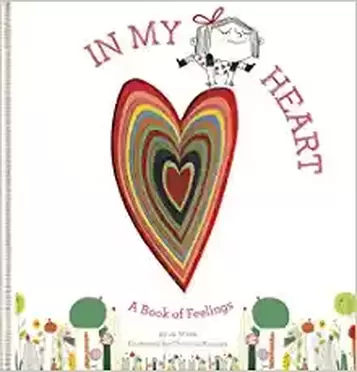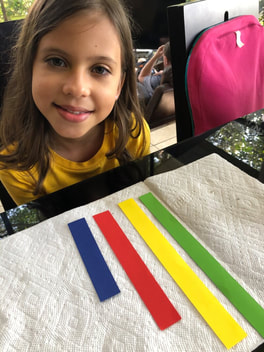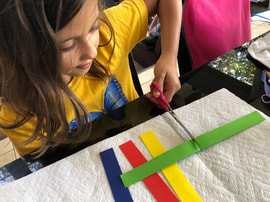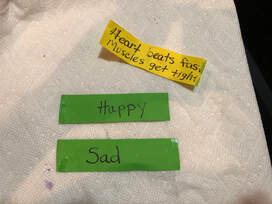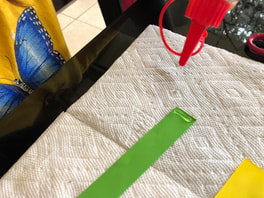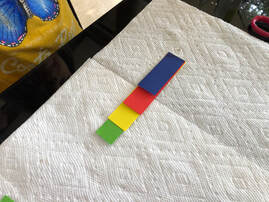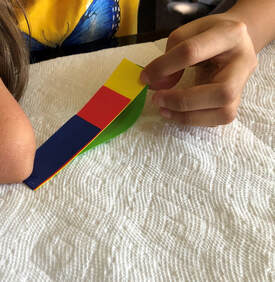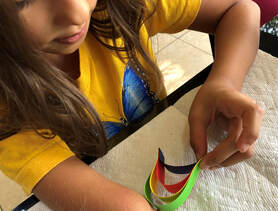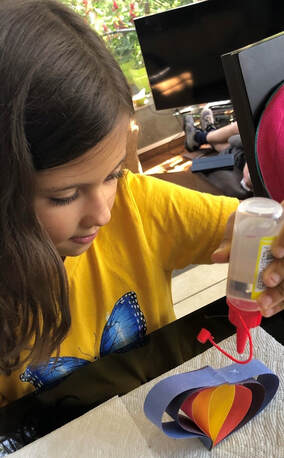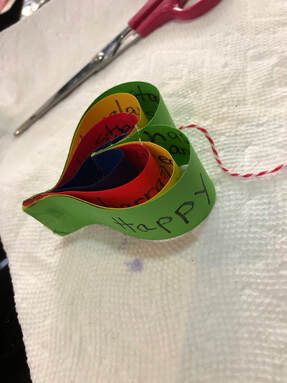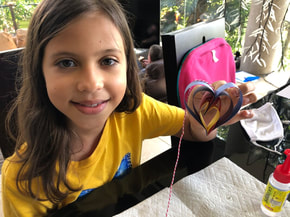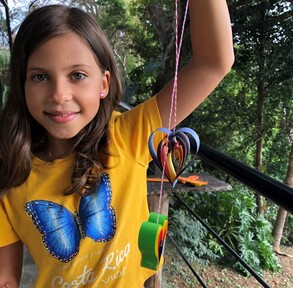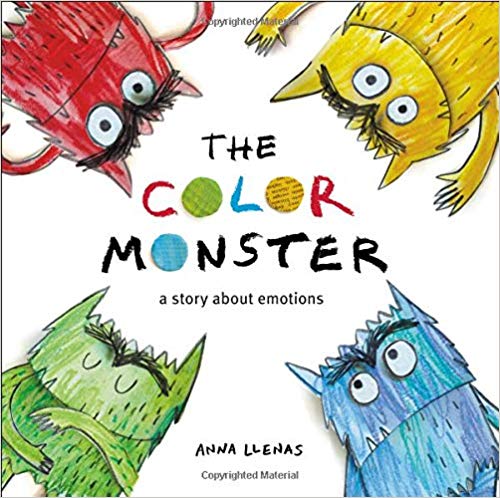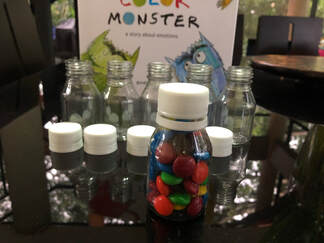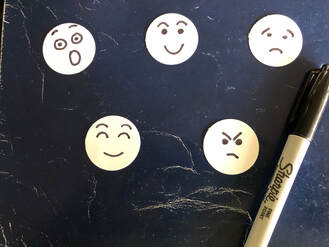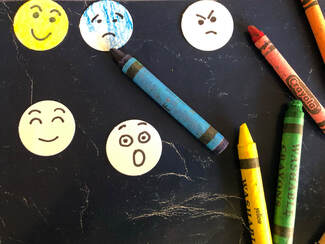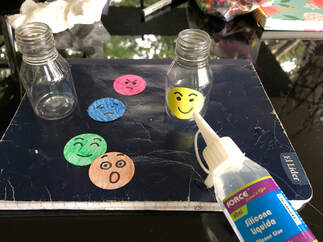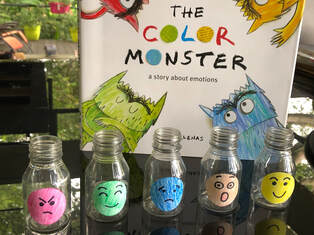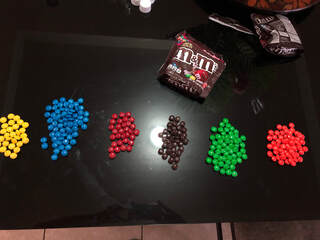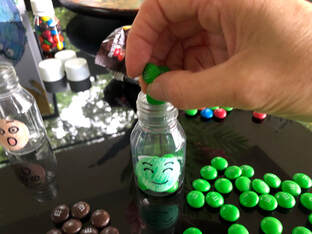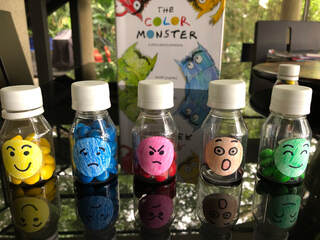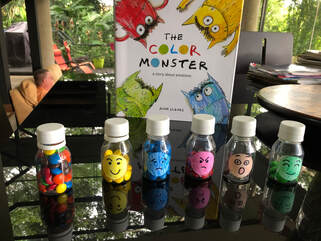|
A celebration is in order this month, as we are not only celebrating Valentine's Day, with a beautiful heart-felt book of feelings, it is my SECOND BLOG BIRTHDAY!!! To mark this momentous occasion, I am doing my first giveaway. I will be giving away a brand-new copy of this month's book, In My Heart: A Book of Feelings, to a randomly selected follower on this blog. So hurry, if you're not yet a member, follow my blog immediately for a chance to win! A winner will be chosen on February 28 and you will be notified by email. (U.S. only, sorry.) The winner will also be announced on the blog, so check back! It has been a joy to provide mental health book recommendations and activity ideas to you every month for the past 2 years. Thanks for being here and for being dedicated to the mental health needs of our precious little ones. Now, moving on to our special Valentine's post . . . A Book Review of In My Heart: A Book of Feelings
In My Heart: A Book of Feelings is full of heart, literally and figuratively! It is constructed with a fun, colorful die cut heart that extends throughout the pages. The reader is sent on a journey through the heart of the main character. This book is a great introduction to emotions for young children. It is appropriate for children ages 2 - 7 and presents the topic of feelings in a visual, kid-friendly manner. Ms. Witek, the author, describes a heart "like a house with feelings living inside," which is a beautiful way to bring the abstract concept of feelings to a tangible level for kids. This also serves to normalize feelings and introduce them as simply a part of being human. The book presents a full range of emotions, alternating between the intense and the mellow that keeps the story from becoming overwhelming. The feelings are presented in an empowering way displaying to the child that they have control over them, rather than vice-versa. The aspect of this book that I feel is most helpful is the fact that the author focuses on how these emotions feel in the body physically and how a person might express specific feelings. Developing a feeling vocabulary and connecting it to how it feels in the body is key to self-understanding. Once we're able to name the emotion we are feeling, and express it in words, the less powerful that feeling becomes and the more confidence we have in managing it. For example, if a young child is having an outburst, if you name the feeling for them and why they may be having it, they de-escalate much faster as they feel understood. With practice, the child will be able to do this on their own. Without emotional education and practice, the skill of regulating our emotions is not developed and this can haunt us through adulthood. The illustrator, Christine Roussey, provides a clear pictorial representation of specific feelings through fun, whimsical drawings. The book captures the attention of the youngest of children, with active and colorful illustrations throughout. By looking at the page, you can actually feel the emotions the main character is experiencing. This is a sweet, gentle book which is empowering to children and can build their confidence in recognizing and learning to regulate their own emotions. The take away is that our feelings, whether intense and ugly, or calm and beautiful, are a part of us and all are okay. The book ends with having the reader consider his/her own emotions, which is a great jump off for a discussion on the child's own feelings and how they feel in their body. To find this book and other books by this author and illustrator, click here. Below I provide an activity idea to take a journey through the heart of your child/client/student. To help me celebrate my 2nd blog birthday, I have a special guest today helping me with the project! Activity Idea for In My Heart: A Book of FeelingsMaterials needed: -Cardstock or construction paper(in 4 different colors) -ruler -scissors - glue (I used a stronger silicone glue) -black marker -twine or ribbon
8 Comments
A Book Review of The Color Monster, |
| The Color Monster a story about emotions Written & Illustrated by Anna Llenas Publisher: Little Brown and Company Emotional self-regulation is the ability to modulate your feelings and reactions when confronted with physical or emotional stressors in your environment. It is the ability to calm yourself when faced with big emotions. The key to emotional regulation, social-emotional health and empathy is recognizing emotions in yourself and others. |
Learning words for feelings, how they feel in your body, and how they look on others is crucial to social-emotional development. This skill is not something that children learn quickly, but a concept that requires frequent repetition and practice. The reason for tantruming in toddlers and young children is the fact that they have not yet learned to regulate their own emotions. Many adults continue to struggle with identifying and modulating their emotions. The lack of this skill can cause problems with relationships as well as behavioral problems throughout life. It is important to start the learning process about feelings as early as possible.
Talking about, modeling and reading about feelings with children from a young age can give them a head start in mastering emotional regulation. There are a number of children's books about feelings out in the world, but one of my favorites is The Color Monster, the story of emotions by Anna Llenas.
The Color Monster is a simple, powerful book. Through the experience of an irresistibly adorable monster and his young helper, kids can eagerly learn about their emotions. Ms. Llenas explains feelings in a clear, supportive, child-friendly manner. The collage-like illustrations and vivid colors bring the words to life.
The crayon-colored monster starts out confused, with his emotions all mixed together. His young friend helps him sort out his emotions so he can make sense of how he feels. The book explores the main emotions including happy, sad, angry, scared and calm. Ms. Llenas describes clearly how each emotion feels. The illustrations pull you into the story and help you to feel the emotion, along with the monster. The exaggeration of monster's facial expressions and the vivid colors makes this book especially friendly to very young children. The Color Monster is appropriate for kids ages 2.5 - 8.
There are tender, supportive statements woven into the story to support young children when learning about difficult emotions. The story ends on a sweet, loving note. The take-away from the story is if you sort out those big feelings and try to understand where they are coming from, you can help yourself feel better. This is a good message and reminder for all of us!
Below is an activity to help your own kids, clients or students sort out their feelings.
Talking about, modeling and reading about feelings with children from a young age can give them a head start in mastering emotional regulation. There are a number of children's books about feelings out in the world, but one of my favorites is The Color Monster, the story of emotions by Anna Llenas.
The Color Monster is a simple, powerful book. Through the experience of an irresistibly adorable monster and his young helper, kids can eagerly learn about their emotions. Ms. Llenas explains feelings in a clear, supportive, child-friendly manner. The collage-like illustrations and vivid colors bring the words to life.
The crayon-colored monster starts out confused, with his emotions all mixed together. His young friend helps him sort out his emotions so he can make sense of how he feels. The book explores the main emotions including happy, sad, angry, scared and calm. Ms. Llenas describes clearly how each emotion feels. The illustrations pull you into the story and help you to feel the emotion, along with the monster. The exaggeration of monster's facial expressions and the vivid colors makes this book especially friendly to very young children. The Color Monster is appropriate for kids ages 2.5 - 8.
There are tender, supportive statements woven into the story to support young children when learning about difficult emotions. The story ends on a sweet, loving note. The take-away from the story is if you sort out those big feelings and try to understand where they are coming from, you can help yourself feel better. This is a good message and reminder for all of us!
Below is an activity to help your own kids, clients or students sort out their feelings.
Activity Ideas for The Color Monster
Materials Needed:
7 small clear plastic containers
Large bag of M & M candies or anything small that can be sorted by color
Hand drawn face circles, printed face emojis or colored round labels
Sharpie black marker
Crayons
Scissors
Glue (silocone glue works better on plastic)
7 small clear plastic containers
Large bag of M & M candies or anything small that can be sorted by color
Hand drawn face circles, printed face emojis or colored round labels
Sharpie black marker
Crayons
Scissors
Glue (silocone glue works better on plastic)
| Directions: 1. Have child fill one jar with M & M's with all the colors jumbled up. (Let child eat some M & M's during activity because, why not?!) 2. Explain to child that this is what's happening inside of them when they have so many big feelings and they're about to explode. 3. Explain that it helps to sort out these feelings, like the monster, so they can understand what is going on inside. This will help them learn to calm down when overwhelmed with feelings. 4. Trace circles with bottle tops and cut them out. Draw feeling faces on circles with sharpie marker. Adult can draw for younger children, older children can draw themselves (or use computer printed emojis or draw faces on round colored labels). Name the feelings in the book and draw a face for each one - happy, sad, angry, scared, calm. 5. Have child color faces with crayons. Child can use feeling colors from the book or decide on their own colors for each feeling. Sticking with the M & M colors, I used: yellow-happy blue-sad red-angry brown-scared (black/grey in book) green-calm There are also Orange M & M's. Child can pick another emotion to use for orange, ie. worried, anxious, loving, disappointed, frustrated, etc. Help the child think of one that they experience often. 6. Have child glue faces on containers. 7. Dump out M & M's on table and have child sort by color. 8. Have child decide how big each of their feelings are by choosing the number of M & M's to put in its corresponding feeling container. The more M & M's, the bigger the feeling. Explain that this can change quickly and often but that you want to know how they are feeling now. You can also do this part by saying, how big would the feelings be if you were thinking about...i.e. when Spot died, when Jacob took your toy, etc. Make sure that they are not just filling up all the containers, that they are thinking about each of the feelings and choosing how big they are. 9. In this example, this child has more sad feelings than happy, a little anger, a little calm, and almost no fear. It would be important to discuss what those sad feelings are about. For example: "Wow, you have a lot of sad feelings, what is that about?" In fact, go through all of the feelings and discuss what makes them feel each one. 10. Completed project! Keep these handy and check in on the child's feelings often (you'll have to keep an extra bag of M & M's on hand for this! Darn!). This would be very useful after child calms down from a melt down (no pun intended!). Discuss what they were feeling and re-do the M & M amounts together. Have fun! |
Follow me on Twitter, Pinterest and LinkedIn
Categories
All
Absent Dad
Acceptance & Commitment -Therapy Skills
Acceptance Of Others
ADHD
Adoption
Anger Management
Anxiety
Body Autonomy
Cognitive Behavioral Therapy Skills
Consent
Coping With ADHD
Coping With Depression
Coping With Feelings
Depression
Disability Awareness
Disappointment
Divorce
Domestic Violence
Empathy
Fear
Feelings General
Feelings-General
Foster Care
Gender Identity
Giftedness
Grandparents As Guardians
Grief & Loss
Growth Mindset
Incarcerated Parent
Kindness
Kinship Care
Learning Disabilities
Making Friends
Mindfulness
Negative Self Talk
Parental Anger
Parental Arguing
Parent W/Mental Illness
Parent W/Substance Abuse
Racial Injustice
School Lockdown Drills
Seizures
Self Esteem
Sensory Issues
Separation Anxiety
Sexual Abuse
Sexual Abuse Prevention
Shyness
Standing Up For Others
Suicide
Supporting A Friend
Temper Tantrums
Terminal Illness
Trauma
White Privilege
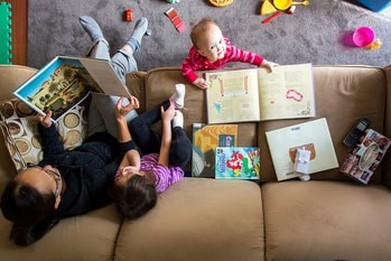
 RSS Feed
RSS Feed
